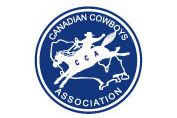The province made a series of difficult decisions as a wide impacting Saskatchewan Budget was tabled this afternoon by the SaskParty government.
The tough measures in the 2017-2018 budget include a one per cent increase and an expansion of the Provincial Sales Tax, the elimination of Saskatchewan Transportation Company, along with a list of eliminated programs and suspended grant payments.
The budget document, entitled Meeting the Challenges, forecasts a $685 million budget deficit despite the government cuts.
“This budget meets the challenge by taking a number of significant measures – including some difficult but necessary measures – on both the revenue and the spending side,” Minister of Finance Kevin Doherty stated in delivering the budget.
Saskatchewan’s Provincial Sales Tax is being raised by one per cent, increasing from five to six per cent, and it will now be applied to more items. Effective April 1, the six per cent PST will also be applied to items such as restaurant meals, snack foods, children’s clothing, insurance premiums, construction services, plus permanently-mounted equipment used in the resource sector.
Doherty realized these PST expanded areas will have an impact on businesses, but he feels it is just short term.
“We need the revenue,” he conceded when asked specifically about the PST being added to children’s clothing. “All the changes that we’re making with respect to the shift from tax on income and productivity to consumption taxes, is based on our government’s intention to get off such a heavy reliance on resource revenue. So it’s an avenue for some additional revenue quite frankly.”
He said the government reviewed their list of exemptions, and compared it to other provinces that have a harmonized sales tax.
“I acknowledge it will put some pressure on families,” Doherty said of the additional spending families will face for PST payable on children’s clothing and restaurant meals. However he felt the corresponding increased tax credit for low income individuals and families will offset those additional taxes.
“Do I think there will be an initial dip on people going out to eat? Yes, I acknowledge that. Do I think that it might curtail some people ordering a renovation on their home, or building a new home, for the time being? I acknowledge that’s a possibility. But the bottom line is this. We had a list of exemptions in the provincial sales tax system, that if we’re going to move to a more consumption tax base, those were big areas that we had to look at.”
The PST base is expanded to insurance premiums effective as of July 1. This will impact all life, accident and health insurance, plus all property, vehicle, liability and casualty insurance, as well as all agricultural insurance.
The budget also established lower Education Property Tax rates for all classes of property in 2017, but because of reassessment and increased property values across the province, the tax revenue will increase by about 9.8 per cent.
This will allow the province to achieve their goal of having a 60/40 funding split, with the province providing 60 per cent of education funding through grants, and the Education Property Tax contributing 40 per cent of the budgeted total needed in education.
“In total, measures being taken this year will add a projected $900 million in incremental tax revenue, significantly decreasing the province’s reliance on resource revenue to fund services.”
While consumption tax rates increased, the province took steps to apply modest income tax rate decreases. The budget lowers Saskatchewan’s three income tax rates by a half point on July 1, and another half point on July 1, 2019. Doherty noted that the Saskatchewan Personal Income Tax Review in 1999 determined that income taxes have a greater negative impact on the economy than consumption taxes. Reducing personal income tax rates, while hiking consumption taxes, would support a growth agenda.
“So while some taxes will increase, there will also be gradual reductions to income taxes for every Saskatchewan taxpayer, in support of our government’s plan for growth.”
Doherty noted that on the whole, the impact on the economy will be minimal
“The negative impact of the tax measures is largely offset by the positive economic impact of the income tax reduction, combined with government operational spending, including ongoing investments into infrastructure.”
SASKATCHEWAN TRANSPORTATION COMPANY
In a sudden move, the province announced that the Saskatchewan Transportation Company will be wound down by the end of May. With significantly declining ridership over the past decade, combined with rising costs, the province can no longer afford the large annual subsidy from taxpayers to operate the service. The per passenger subsidy has risen from $25 per passenger a decade ago to $94 per passenger.
“The reality that came home for us…everything that they possibly could do to try and change their business model to improve their revenue base and to get ridership up, just did not work.”
Ending the STC service will result in a savings of $85 million which the province would have spent over the next five years.
In making their decision, the province pointed out that last year STC had 77 per cent fewer riders than 1980. A total of 787,455 passengers utilized STC services in 1980, with that total dropping to 200,914 in 2015. The province forecasts that ridership would further deteriorate to 182,386 in 2016/17, an additional decrease of -9.41 per cent.
“STC has become unsustainable without subsidies, and that money would be better spent on other areas such as health care, education and infrastructure,” Doherty said.
The Crown Investments Corporation will oversee the wind-down of STC services. The province notes that in some situations private sector or not-for-profit operations could pick up freight delivery services, and potentially passenger service depending on demand.
The winding down of STC will impact 230 employees who operate 25 routes, while two additional routes are contracted to a private operator.
BUDGET CUTS
Five healthcare services fell victim to cuts, with funding phased out or reduced for the hearing aid plan (saving $3 million), podiatry services ($1.2 million in savings), orthotics ($285,000 saving), plus sleep apnea equipment ($800,000 savings). While coverage will continue for low-income residents, consumers will now be accessing these services from the private system. The province completely dropped their coverage for Chiropractic services, with a savings of $1.25 million to the province.
Other cuts announced in the budget include:
– A series of income-based increases will be experienced by some long-term care residents, but fees won’t be affected for about 50 per cent of residents. The province notes they will continue to subsidize 83 per cent of long-term care overall costs.
– The Community Rink Affordability Grant has been suspended.
– Funding for Regional Parks has been reduced by 50 per cent.
– $3.5 million in decreased funding for Regional Libraries.
– Elimination of the Culture on the Go program at a savings of $800,000.
– The Employee’s Tools Tax Credit is eliminated effective for the 2017 taxation year.
– Education and tuition tax credits are eliminated effective July 1.
HIGHER SIN TAXES
Tobacco tax rates will increase by two cents per cigarette, rising to 27 cents from 25 cents effective midnight tonight. Corresponding increases are in effect for cut tobacco.
Wholesale liquor mark-ups of 4.0 to 6.8 per cent will take effect on April 1.
HEALTH
There is a slight increase in health spending, with expenditures creeping up 0.7 per cent to $5.6 billion. This includes $83.7 million for health capital spending. There was also $3.4 billion approved for Regional Health Authorities, up 1.2 per cent over a year ago. This funding comes in the midst of the shift to a single provincial health authority, which will allow the province to save between $10 million and $20 million annually as a result of reduced administration.
EDUCATION
Education funding drops 1.2 per cent from a year ago to $3.6 billion. Saskatchewan’s 28 school divisions will share a total of $1.86 billion in school operational funding, a reduction of $45 million.
There will be a 5.8 per cent cut to overall spending at the Ministry of Advanced Education, and post-secondary institutions will receive a five per cent reduction in base operational funding.
SOCIAL SERVICES
Spending for Social Services and assistance funding has grown nine per cent to a record $1.4 billion. The largest portion of the $113 million in increased spending will go to Income Assistance, and this additional $67 million will to help address larger caseloads and more complex cases.
The province did suspend $8 million in funding for The First Home Plan for recent graduates, and savings of $10.6 million will be recorded though benefit changes in the TEA, SAP and SAID programs.
OVERALL
The province is forecasting revenue will reach $14.17 billion, a one per cent increase from last year’s budget. Budgetary expenses are forecast to climb 2.4 per cent from a year ago to $14.80 billion.
The $685 million deficit forecast in the budget was more palatable than making a drastic one-year swing to fully balance the budget.
MORE TO FOLLOW






